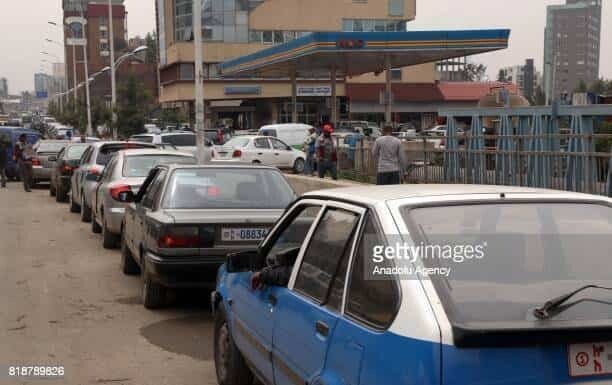
The report presents a comprehensive overview of the benzene market in Ethiopia and a forecast for its development in the next five years. It provides a detailed analysis of the market, its dynamics, structure, characteristics, main players, growth and demand drivers, etc. This is the most detailed and comprehensive report about the benzene market in Ethiopia currently available!
The purpose of the report is to describe the state of the benzene market in Ethiopia, to present actual and retrospective information about the volumes, dynamics, structure and characteristics of production, imports, exports and consumption and to build a forecast for the market in the medium term. In addition, the report presents an elaborate analysis of the main market participants, the price fluctuations, growth and demand drivers of the market and all other factors, influencing its development. It also focuses on the overall installed production capacities in the country along with the main producers on the market, the technologies each of them uses and the average utilization rates.
This research report has been prepared using the unique WMStrategy’s methodology, including a blend of qualitative and quantitative data. The information comes from official sources and insights from market experts (representatives of the main market participants), gathered by semi-structured interviews.
The report on the benzene market in Ethiopia includes:
• Analysis and forecast for the economy of Africa;
• Analysis and forecast for development of the market volume (market size), value and dynamics;
• Market breakdown (by origin, etc.);
• Volume and dynamics of all installed capacities for the production of benzene in Ethiopia and forecast for their development in the medium term;
• Breakdown of all installed capacities for the production of benzene in Ethiopia by their owner and operator companies;
• Main technologies used for producing benzene in Ethiopia in the main plants of each of the domestic market players;
• Average annual utilization rates for the production of benzene in Ethiopia and forecast for their development in the medium term;
• Volume, dynamics and analysis of domestic production (past, current and future);
• Analysis of price levels (wholesale, retail, distributors, etc.) and their dynamics (past, current and future);
• Volume, dynamics and analysis of imports (past, current and future);
• Volume, dynamics and analysis of exports (past, current and future);
• Volume, dynamics and analysis of consumption (past, current and future);
• Characteristics of the main market participants (manufacturers, distributors, wholesalers, retailers, importers, exporters, Governmental structures, etc.) and the competitive landscape;
• Profiles of the main companies, producing benzene in Ethiopia along with their overall production capacities;
• Value chain analysis and structure of price formation;
• Analysis of the factors, influencing the market development (market growth drivers, restraints, recent state programs, etc.);
• Analysis and forecast of the trends and levels of supply and demand on the market;
• Forecast for the market development in the medium term (including three possible scenarios for development).
This report will allow you to:
• Quickly and cost–effectively gain competitive intelligence about the market;
• Track market data, including size, value, segmentation, forecasts, dynamics and structure – past, present and future;
• See the exact usage of benzene in Ethiopia by main applications/product groups in the last five years and a forecast for its development in the medium term;
• Evaluate the overall installed capacities used for the production of benzene in Ethiopia and their utilization rates in the last five years and a forecast for their development in the medium term;
• Strategically assess the competitive position of each of the main domestic producers, along with their overall installed capacities and production techniques;
• Track and identify key market trends, opportunities and threats and key drivers behind recent market changes;
• Strategically assess market growth potential, demand drivers and restraints on the market;
• Evaluate the key macroeconomic indicators to get insight into the general trends within the economy;
• See how the market performed in the past (over the last 5 years) and how it will perform in the future (in the next 5 years);
• Get acquainted with the leading companies on the market (manufacturers, distributors, wholesalers, retailers, importers, exporters, Government structures, etc.);
• Evaluate how diversified the market is in terms of competitive intensity, fragmentation and environment and understand competitive threats;
• Empower your marketing, branding, strategy and market development, consumption and supply functions with useful market insights;
• Build your investment strategy by assessing market attractiveness or company attractiveness;
• Build your own market entry or market expansion strategy or evaluate your current strategy;
• Add weight to pitches and presentations by using official and accurate data and calculations.
This is the most comprehensive report covering the benzene market in Ethiopia currently available! We also offer similar reports, covering every other global country, region and the world as an overall and offer special terms for bundle purchases. So, if you are interested in the benzene market in Ethiopia, this research report will provide you with invaluable analysis of the market, its recent and future development. In addition, the report will save you time and money while presenting you all the necessary information, empowering you to make informed decisions and move your business forward!
Technical data-wm-strategy

Hey Russian Oil and Gas is available for sure if the distribution is agreed at at attractive prices and may be not even with western hard currency but with real products that African can produce and may be Russians need as for example tropical produce. The Russians probably will also ditch western currencies on the long run. Multipolar world only will benefit Africa and poor countries. We have not see the degree of cycles of violence that did occur in the last decades after the US assumed unipolar position after the end of cold war. The time is close of either outcome either US swallows and controls the world or it does weaken and the old block economies return back again.